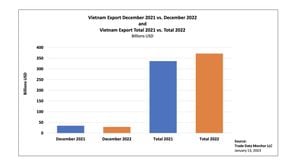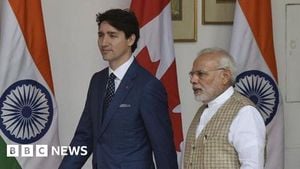India's economy is currently facing significant challenges, marking what some are calling its "most precarious and difficult" situation in years. This stark assessment was articulated by Congress MP Jairam Ramesh, who outlined the detrimental effects of stagnant wages, high inflation, and rising inequality on consumption growth. The alarming trend is not just concerning for the politicians but also for everyday Indians, as many struggle with rising costs and diminishing purchasing power.
The sentiment around India's economic conditions isn't merely political rhetoric but is echoed by corporate leaders as well. Ramesh noted, “India Inc has now joined the chorus,” with even prominent CEOs recognizing the troubling fact of the shrinking middle class. It’s clear from these statements and from various reports and statistics compiled over the past decade, the consumption story, once the heartbeat of India's growth narrative, is now seemingly reversing.
Ramesh drew from the recently released Annual Survey of Industries 2022-23 to bolster his claims, stating there's clear evidence showing the average worker today can buy significantly less than they could ten years ago. The median household income has not kept pace with inflation, which has captured headlines for months. Just last year, Dr. Viral Acharya, former Deputy Governor of the Reserve Bank of India, commented on the monopolistic tendencies of five major conglomerates, including the Adani Group, stating these business practices have contributed to exorbitant profit margins at the expense of the average consumer.
He provided staggering figures to underline this point: back in 2015, on spending ₹100, consumers were paying about ₹18 to industrialists. Fast forward to today, and they are now forking out nearly ₹36 for profits alone, indicating the reliance on cronyism and the resultant hikes imposed on everyday goods. Such inflationary pressures pose serious threats to not just individual families but the economic structure nationally.
The situation is particularly dire when it looks at consumption patterns among different classes. The recovery post-COVID-19 has been uneven and categorized as "K-shaped," with certain segments, particularly the affluent, bouncing back faster than the underprivileged, exacerbated by the pandemic's long-lasting impacts. Rural India, often considered the backbone of the nation's economic framework, shows declines, with two-wheeler sales serving as one of the barometers of growth remaining lower than those recorded pre-2018's peak.
Ramesh contended these challenges lead to stark inequality, stating, “Narendra Modi’s ‘Billionaire Raj’ is now more unequal than the British Raj during its height.” He believes consumption growth patterns are being dictated increasingly by well-off consumers purchasing luxury items, whereas mass-market consumption falters. This reflects the deep socioeconomic divides festering within the fabric of Indian society.
The backdrop of rising costs is already forcing many families to reconsider lifestyle choices. Decisions are pockmarked with hesitance; whether to purchase essentials or non-essentials is no longer clear-cut. Reports have shown urban demand has been trending downward over for the last five quarters, as people rethink if they truly need to buy the latest gadgets or clothes when their livelihoods feel threatened or uncertain.
Indeed, the economy's performance has causal links to household expenditure habits. Households are often forced to tighten their spending, causing roller-coaster effects on various sectors. Analysts stress this shift suggests economic strain is not merely temporary; instead, it’s pointing toward structural issues.
The government has had to respond to these pressing economic concerns, pledging policy changes aimed at revitalizing growth and addressing consumption hiccups. Strategies to boost agriculture, improve job creation, and ease inflation rates are reportedly under consideration as part of broader fiscal measures.
Interestingly, the trends extend to broader market behaviors as reflected by the stock exchanges. While some analysts might argue the market has surged due to foreign investments and speculative trading, others attribute this to cyclical shifts, potentially masking the undercurrents of economic decay impacting real-world livelihoods across urban and rural India.
During this tumultuous time, it's imperative for policymakers to confront blunt realities: stagnant wages and soaring inequality threaten long-term growth potentials and must be addressed holistically. There’s speculation around whether policies aimed narrowly at accelerating the economy could fail if broader issues of earnings and distribution remain unacknowledged. Indeed, these challenges necessitate not just economic measures but also thoughtful discussions surrounding social welfare and equity.
Over the past few months, voices of dissent and calls for solidarity have grown louder. Activists echo sentiment supported by public opinion, urging the government to tackle inflation head-on and to create avenues for equitable growth. Whether these voices will induce tangible changes remains to be seen. For the moment, as the nation moves toward the next electoral showdown, economic viability remains front and center on the political agenda.
It's clear India stands at a crossroads: will the nation navigate through these consumption hiccups, remediately addressing long-term systemic challenges, or will the situation continue to deteriorate, eroding decades of economic progress? The response may very well define the future of India's economy, and answering these pivotal questions will take more than just promises; it will take actionable change.



